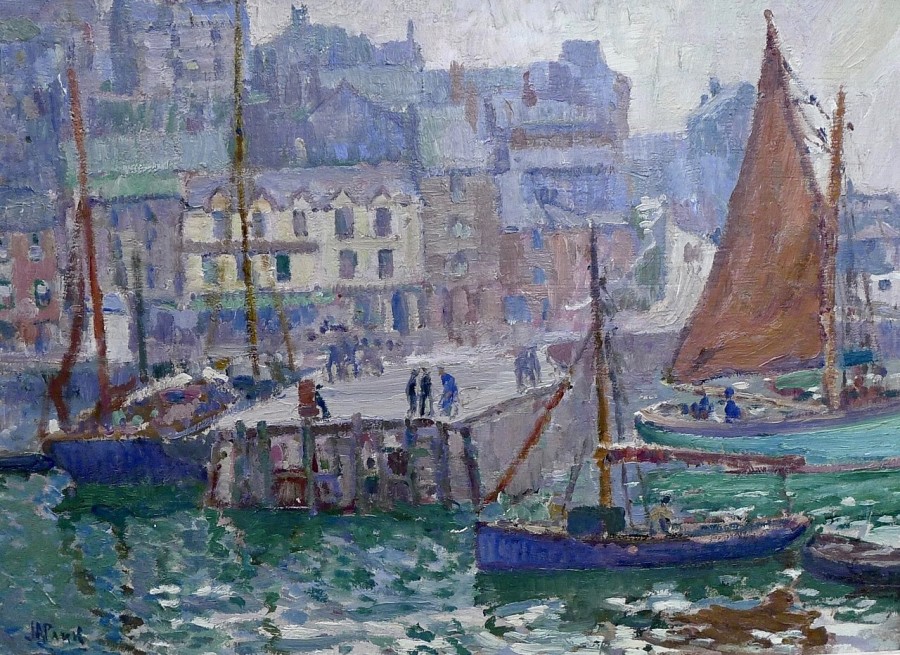Provenance
Private collection, Devon
Note:
John Park (1880-1962) is best known for his impressionistic depictions of boats in St Ives harbour painted on the spot ‘en plein-air’, in which he captured the sparkle of sunlight on the water, the white sands and multi-coloured hulls of working boats, giving his paintings endless movement and reflections. He also painted landscapes, often featuring rivers, and was an accomplished still life painter. He commented that “Colour is everything. Anyone can be taught line, but you cannot teach a feeling for colour.”
Park studied at Julius Olsson and Algernon Talmage’s School of Painting in 1902-1904, and was considered their star pupil, and in 1905 had three works accepted at the RA. After serving in WW1 he returned to St Ives in 1921. He was already an established artist when he became a founder member of the St Ives Society of Artists in 1927, becoming probably their best known member and most highly rated artist.
John Park and Borlase Smart are the two most important links between the more traditional St Ives artists and the modernists. His impressionist style was recognised by many of the modernists as the most advanced of the traditional painters, with Sven Berlin rating him one of the best of English colourists and unsurpassed as a painter of light: “He painted like an angel – simply cathedrals of light.”
